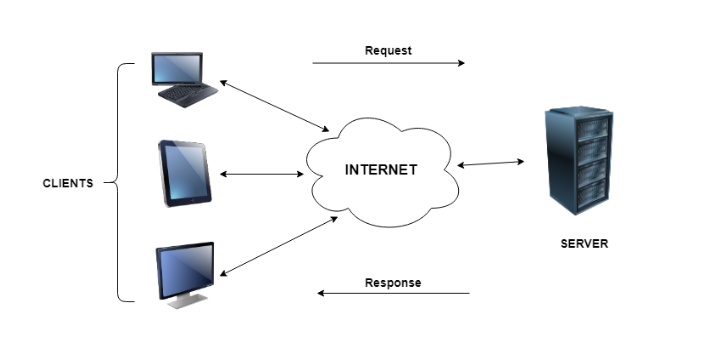In client server computing, the clients requests a resource and the server provides that resource. A server may serve multiple clients at the same time while a client is in contact with only one server. Both the client and server usually communicate via a computer network but sometimes they may reside in the same system.
An illustration of the client server system is given as follows:

Client/Server computing is a computing model in which client and server computers communicate with each other over a network. In client/server computing, a server takes requests from client computers and shares its resources, applications and/or data with one or more client computers on the network, and a client is a computing device that initiates contact with a server in order to make use of a shareable resource.
From the first client/server computing model introduced at Xerox PARC in the 1970s to today’s highly advanced client server computing networks, our client/server computing dictionary offers a glossary of key terms you need to know.
Characteristics of Client Server Computing
The salient points for client server computing are as follows:
- The client server computing works with a system of request and response. The client sends a request to the server and the server responds with the desired information.
- The client and server should follow a common communication protocol so they can easily interact with each other. All the communication protocols are available at the application layer.
- A server can only accommodate a limited number of client requests at a time. So it uses a system based to priority to respond to the requests.
- Denial of Service attacks hindera servers ability to respond to authentic client requests by inundating it with false requests.
- An example of a client server computing system is a web server. It returns the web pages to the clients that requested them.
Difference between Client Server Computing and Peer to Peer Computing
The major differences between client server computing and peer to peer computing are as follows:
- In client server computing, a server is a central node that services many client nodes. On the other hand, in a peer to peer system, the nodes collectively use their resources and communicate with each other.
- In client server computing the server is the one that communicates with the other nodes. In peer to peer to computing, all the nodes are equal and share data with each other directly.
- Client Server computing is believed to be a subcategory of the peer to peer computing.
Advantages of Client Server Computing
The different advantages of client server computing are:
- All the required data is concentrated in a single place i.e. the server. So it is easy to protect the data and provide authorisation and authentication.
- The server need not be located physically close to the clients. Yet the data can be accessed efficiently.
- It is easy to replace, upgrade or relocate the nodes in the client server model because all the nodes are independent and request data only from the server.
- All the nodes i.e clients and server may not be build on similar platforms yet they can easily facilitate the transfer of data.
Disadvantages of Client Server Computing
- The different disadvantages of client server computing are:
- If all the clients simultaneously request data from the server, it may get overloaded. This may lead to congestion in the network.
- If the server fails for any reason, then none of the requests of the clients can be fulfilled. This leads of failure of the client server network.
- The cost of setting and maintaining a client server model are quite high.